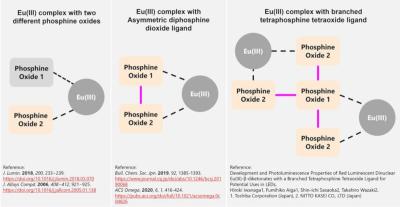Toshiba Corporation announced that it has developed a new high-performance phosphor material that could be highly useful in microLED color conversion, among other applications. Toshiba aims to start mass producing the new material in 2025, and will soon offer samples for potential partners and customers.
Toshiba says that the new material delivers excellent solubility in polymers or organic solvents, where it is transparent and colorless under visible light, and that emits persistent red-light emissions under UV light, with excellent color purity and a luminescence six times that of current phosphors.
Toshiba says that in microLED color conversion, inorganic phosphors typically have a limited color reproduction capability and luminescence intensity. These phosphors are also insoluble and exist as fine particles, and when used in security printing, printed patterns become faintly visible, depending on the angle of view and light exposure. Toshiba's new phosphor overcomes these problems.
The company has developed a proprietary molecular design method, and used this to bind the ions of a standard Eu(III) luminescent complex with two or more phosphine oxide structures, including a branched tetraphosphine tetraoxide ligand recently discovered by Toshiba (see figure above).
This created a new structure that is highly soluble, with excellent transparency, and that successfully increases luminescence intensity to achieve high color purity and durable emission. The molecular design method also has the potential to create phosphors that emit different colored light when applied to different luminescent complexes.


